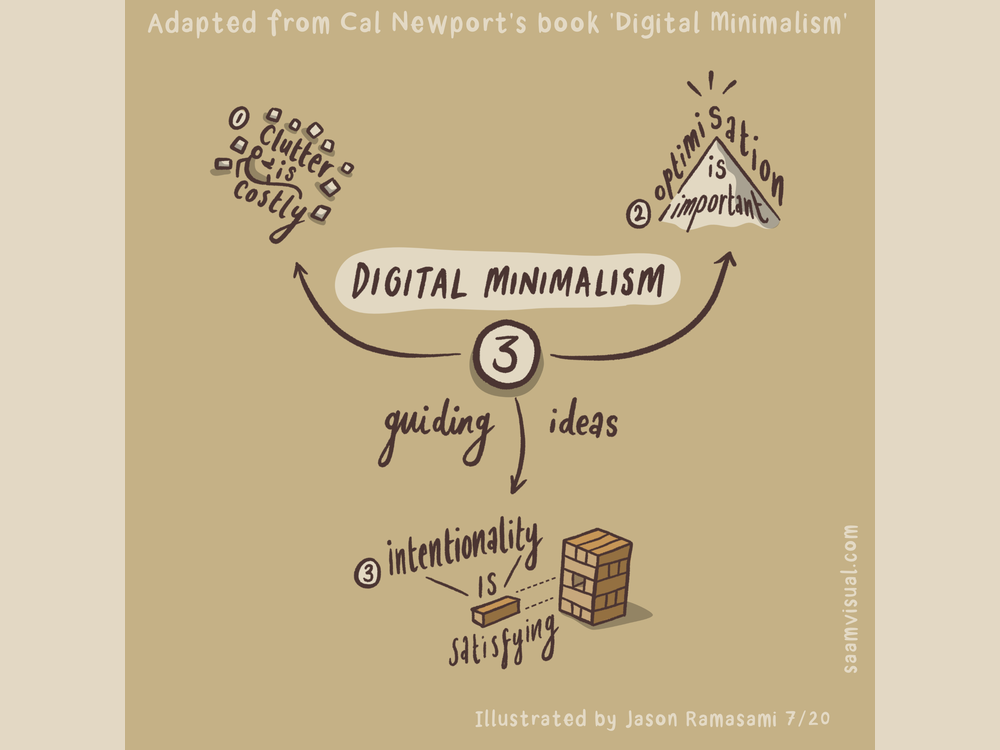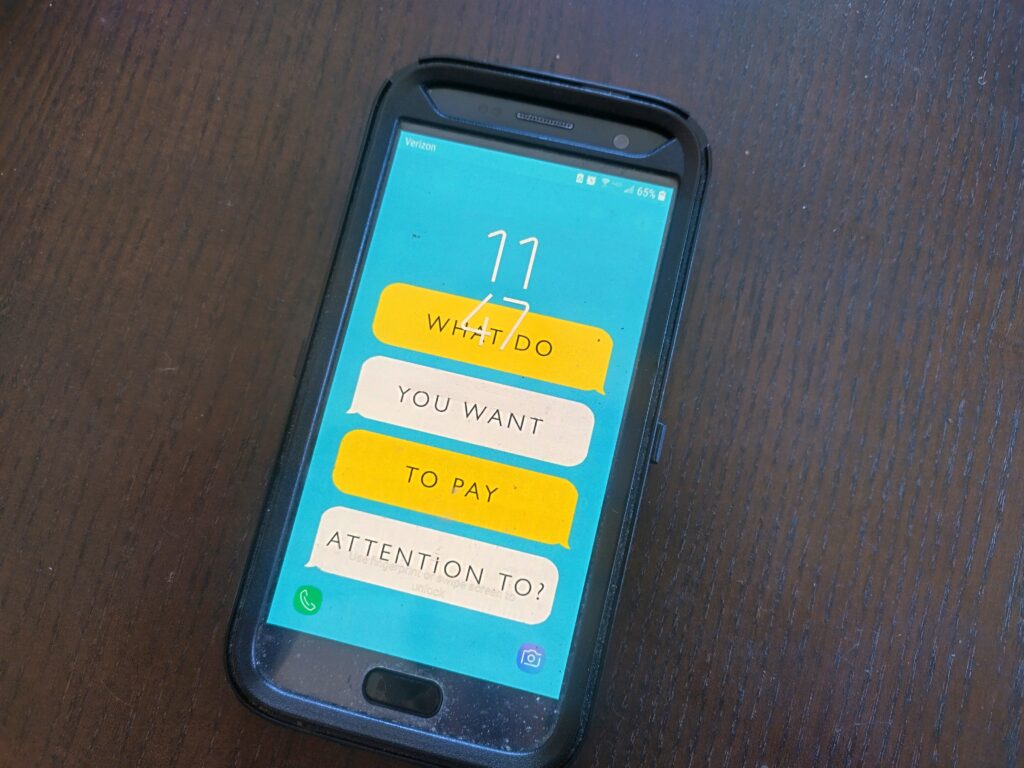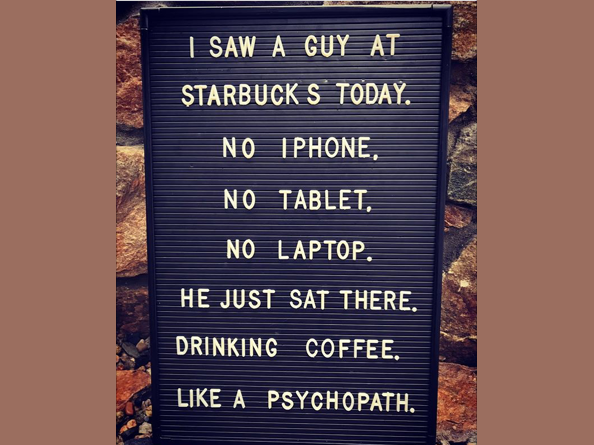Breaking Up with Your Phone
For those of you who celebrate, happy Palm Sunday; for those of you keeping track, I am now past the 30-day mark of the digital detox (day 39, to be exact). At this point in the process, I am most definitely bending (or breaking) some of my rules and am more than ready for a balanced transition into what’s next for me and my relationship with the digital world. And so is Christian, who has been a very patient and supportive husband through this process.
Seeing the Need
A few weeks ago when writing an earlier installment of this series, I allowed myself a bit of fun procrastination and decided to read the 1-star reviews of Cal Newport’s Digital Minimalism, [1] the book that inspired my Lenten fast this year. I often enjoy reading bad reviews of things I like so I can (at best) identify my own blind spots, understand different perspectives, and/or practice some empathy, or (at worst) laugh at people who are entitled, closed-minded, and/or completely missed the point. For the record, I have never claimed to be a good person.
Some of these 1-star reviews involve people taking offense to the book because they think their phone use habits are not excessive, and that he shouldn’t be judging them for how they use their devices… or that he is dictating exactly what people should be doing (e.g. going for hours-long walks in the woods or joining a CrossFit gym) and that he is an entitled white male who has no concept of other peoples’ time or accessibility limitations. I’m not going to speak for Newport, say that he isn’t a privileged white male, or that doesn’t have limitations in his life experience (we all do), but many of these objections smack of the same complaints I heard about Marie Kondo two years ago, [2] which resulted in a similar response from me: basically, if you aren’t looking to make a change in your life, this book was not written for you.

Image credit: [3]
But I get it – change is scary and hard. Not everyone wants to make a change, and even people who are on board with the concept can frequently find reasons to justify not moving forward with a plan. I have fallen into that latter group very often over the course of my life, so I have absolutely no judgment for anyone who is intimidated by the daunting task of pushing themselves outside of their comfort zone, especially when they want to but might not know how or believe that they can succeed. I even mentioned in my first blog post on this subject last fall how scary a digital detox seemed and how I was not ready to do one. [4]
Baby Steps
To that end, I wanted to take this opportunity to share a more moderate approach, specifically for people who are not ready for a full digital detox but still have a desire to balance the scales to some extent in the battle for their attention. I present to you Catherine Price’s “How to Break up with Your Phone” Challenge, which was featured on Good Morning America and subsequently made the rounds in internet discussions during the fall of 2018.
If you’re a regular reader of this blog, you’ll recognize Price’s name from previous posts in this Digital Detox series and/or a recent exploration regarding my desire to get more fun out of life, particularly where my hobbies are concerned. [5] Her work and Newport’s echo each other in a lot of ways, with large overlaps when it comes to outlining the sophistication of digital tools designed to addict our brains and the importance of building out healthy habits to fill the gap when we cut back on social media. Back when Price’s 7-day challenge [6] and her book of the same name [7] were hitting headlines, I remember a coworker telling me about it. I signed up immediately, and I was amused to discover that I am still on her mailing list. Fortunately, since I never throw anything out (including old emails), I still had the entire introductory series on-hand to reference in this post.

Catherine Price’s Phone Breakup Challenge consists of the following steps…
- Day 1: Remove icons from your home screen; turn off phone notifications; set your screen’s display to black and white; get an alarm clock; charge your phone outside your bedroom; make your phone’s “bedtime” 30 minutes before yours; turn your ringer on when it’s plugged in so it effectively becomes a landline phone
- Day 2: Change your lock screen to something that asks you why you’re picking up your phone; put a rubber band around your phone (or something else that breaks the mindlessness of picking it up and unlocking it); ask yourself what you want to be doing with your time every time you pick up your phone
- Day 3: When you have the urge to check your phone, write down what’s on your mind in a notebook instead; make lists of things to check or do later, all at once
- Day 4: Set up auto-away messages explaining that you’re not going to be answering immediately and (if you like) how you can be reached in case of an emergency
- Day 5: Ask others to put their phones away or not check their phones when talking to you
- Day 6: Do one thing at a time – don’t multitask with your phone
- Day 7: Identify what changes worked and where you had difficulty
In the end, I only really stuck with one of these steps, and even that one was not effective for long. I still have the same phone I did at the time, and it still has one of her images as my lock screen, asking me “What do you want to pay attention to?” Unfortunately, I barely even notice it anymore because it has been there for so long – much like the fact that while I haven’t had the Facebook app on my phone for years, I navigate there instantly and unconsciously whenever I tap the Chrome icon.
Time, Time, Time
Some of Price’s “phone breakup” steps never got started, and most of the ones that did didn’t stick. I know why, though: I wasn’t ready at the time. I knew that I “should” be spending less time on my phone, but other than experiencing a vague sense of external pressure related to self improvement (similar to exercising more regularly or eating healthier food), I was not at the point where I had the necessary motivation – or saw the need – to follow through. That may be changing, though.

Image credit: [8]
Similar to Kondo, Newport and Price ask those of us who want to make a change in our lives to consider what that change will look like, to identify what we want to prioritize. It’s been five years since I failed to adopt Catherine Price’s phone breakup challenge, but a lot can happen in five years. I now run an organization that I believe may be the primary vehicle for how I will leave this world a better place; I now know for certain that I’m not going to have kids of my own; I’m about a year away from a round-number birthday, which makes me wonder if I am experiencing the first whispers of a mid-life crisis…
Ultimately, I am becoming increasingly aware of the finite nature of my life and how valuable every second of it is – and while I still feel a strong desire to return to my primary outlet for connecting with people I care about, I also recognize a need to make use of it in a more productive, proactive way. As I head into the final week of Lent, I’ll be thinking about what that relationship needs to look like moving forward. There will be more to come in the final installment of this series next week.
~
In the meantime, have you done a Newport-scale digital detox or taken smaller-scale steps like what Price describes? What worked for you and why? I’d love to hear about it below.
Thanks for reading!
[1] https://www.goodreads.com/book/show/40672036-digital-minimalism
[2] https://radicalmoderate.online/tidying-up-week-3/
[3] https://saamvisual.com/process/2020/7/21/calnewport-digitalminimalism
[4] https://radicalmoderate.online/digital-minimalism/
[5] https://radicalmoderate.online/angel-of-music-part-2/
[6] https://www.goodmorningamerica.com/living/story/break-phone-step-step-guide-day-challenge-57625061
[7] https://www.goodreads.com/book/show/35209767-how-to-break-up-with-your-phone
[8] http://www.simplechiceveryday.com/blog/2018/3/4/how-to-break-up-with-your-phone
0 Comments